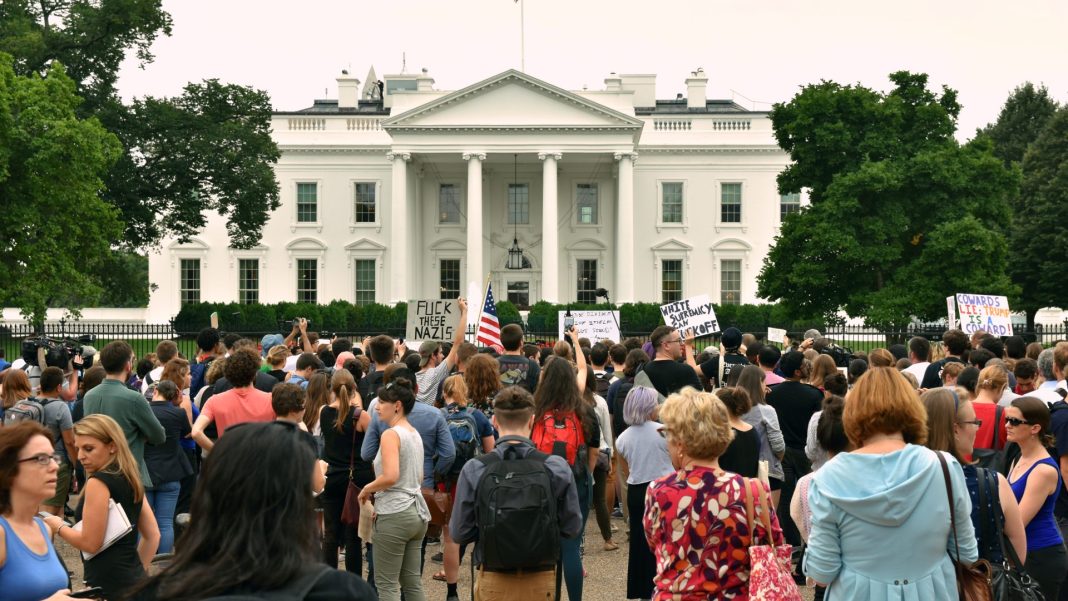Many of us love American politics. We flock to see American politicians and leaders when they speak in Oxford, discuss elections and issues passionately around dinner tables, and casually mention that we read The New York Times as often as possible. Yet, we do all of that from our ivory tower of ‘across the pond’. Usually, when we discuss these issues and criticise politicians for their latest policy or statement, we completely forget that they are not aimed at us. To better understand them, I think we should ask ourselves who they are speaking to.
The United States is highly polarised. In his acclaimed book Why We’re Polarized, the journalist Ezra Klein discusses the causes and consequences of polarisation. Klein writes that Americans became “more consistent in the party we [Americans] vote for not because we came to like our party more – indeed we’ve come to like the parties we vote for less – but because we came to dislike the opposing party more”. This has been a core part of the growing divide in American society. As the Pew Research Center found, in the two decades before 2014 the ideological overlap between Democrats and Republicans shrunk substantially and the parties became more ideologically consistent and ‘pure’. Although they have not published another report about polarisation recently, there is reason to believe the trends they described continued or even accelerated in the decade since 2014.
So, just over six months away from the second Trump-Biden election, the public is nearly perfectly divided. In a new study published earlier this month, the Pew Research Center analysed the political coalitions in the United States. According to them, American voters are split between Democrats and Republicans, the former leading with 49% to the latter’s 48% of voters. However, within these voter blocks the differences are substantial. Although both parties became more diverse in recent decades, there are significant differences between Democratic and Republican voters. The Republican coalition consists of 79% White voters, 9% Hispanic voters, and 12% voters who are Black, Asian or belonging to other racial groups. In comparison, the Democratic voter coalition is made up of 56% White voters, 16% Hispanic voters, 18% Black voters, 6% Asian voters, and 4% belonging to other racial groups. As former Speaker of the House of Representatives, Nancy Pelosi said during a speech at Oxford Speaks this April: “Our [Democrats’] diversity is our strength”.
Yet, is Pelosi right in stating that Democrats are more diverse? Diving further into Pew’s data it appears so. The voter groups who predominantly support the Republican party are White evangelical Protestants; people living in rural areas; White men; and White voters without a college degree. On the other hand, the voter groups who mostly support the Democratic party are women with a college degree; religiously unaffiliated voters; voters living in urban areas; and the majority of Hispanic, Black, and Asian voters. Additionally, it should not surprise you to know that two in three young voters (18-24) align with Democrats while the majority of older voters (65 and older) identify with Republicans. These differences really are quite stark.
To put it bluntly to anyone reading, you are most likely not in either Trump or Biden’s mind when they speak. Both parties’ efforts will be aimed, mainly, at mobilising specific voter groups they identified as increasing their chances of winning. This includes making sure they remain loyal to the party, as well as go out to vote. Accordingly, the parties will focus on messaging (speeches, social media posts, and policy announcements) that will resonate with their expected electorate. Democrats will want to make sure young, urban, college-educated, non-religious, female, and racially diverse voters are excited about Biden (or terrified of Trump). For Republicans, almost the exact opposite is true: they will try to reach old, rural, religious, White, not-college-educated voters.
It is important to remember that most voters do not like Biden or Trump and were hoping for different candidates than what they now have. According to FiveThirtyEight’s analysis, approximately 56% of voters disapprove of President Biden. Furthermore, 538 found that at no point since leaving office did the majority of Americans have a favourable view of Trump. Today, approximately 53% of Americans hold unfavourable views of Trump. Here we should remember what Ezra Klein pointed out: voters do not like their own party; voters hate the other party. For this reason, we are seeing substantial campaigning not on the merit of the candidate but on the faults (or ‘HUGE RISKS’) of the other.
So, according to the data, if you were in the United States it is more likely that Biden’s messaging would be directed at you. But, as you are in the United Kingdom, you are, by and large, uninteresting to them (unless you are American, of course). Nevertheless, we should keep in mind, when reading about American politics, who the candidates are trying to convince (or scare) in order to win. That is, in most cases, the reason why they are saying what they are saying.


